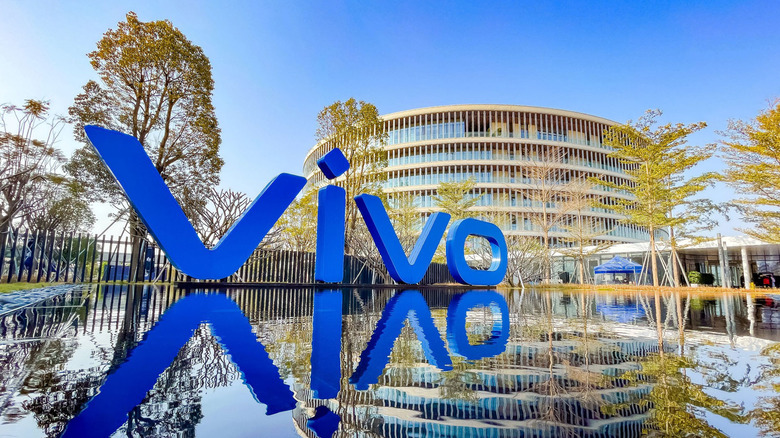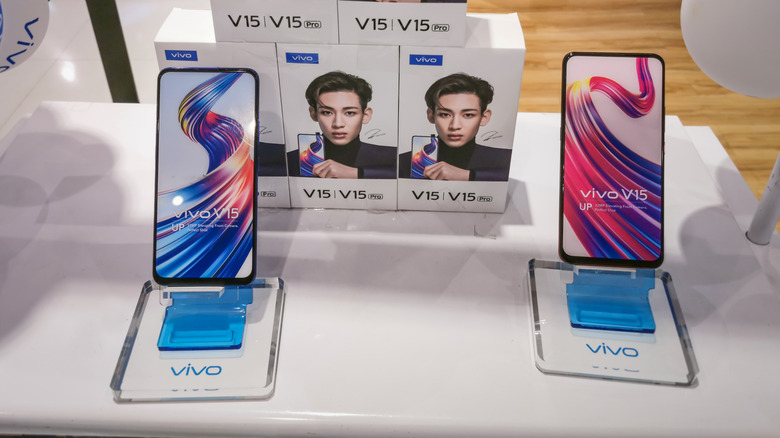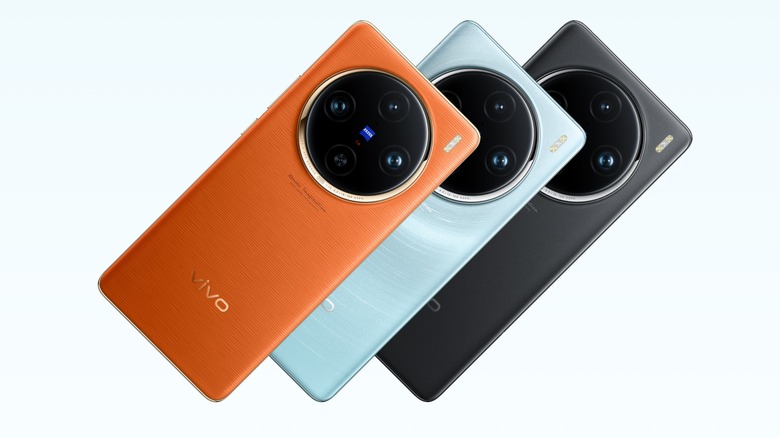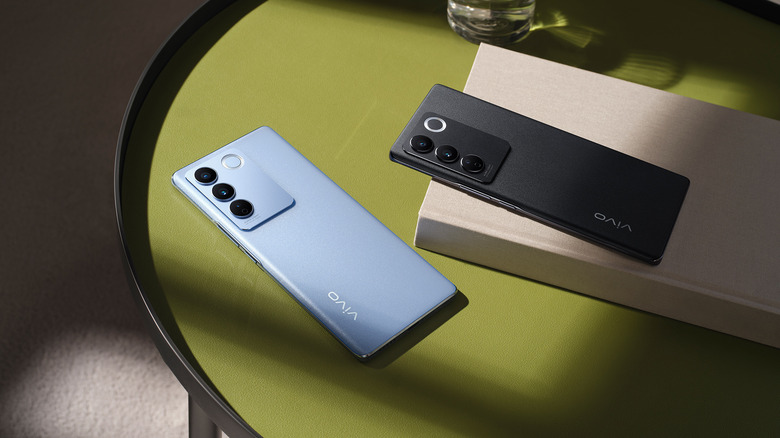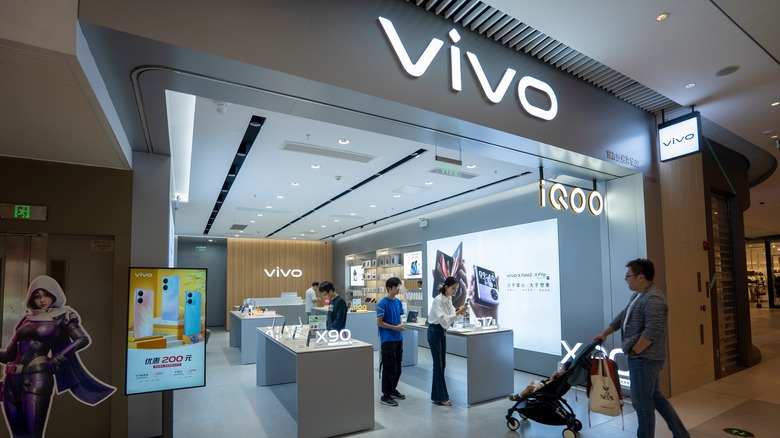Everything To Know About Vivo Phones & Accessories
Despite tasting massive success some places, Chinese smartphone brands have had a difficult time competing in the American smartphone market. Many of these brands have been around for well over a decade and are established players in the smartphone space, gaining popularity across the world — especially in Asia, Africa, and Europe — but not the U.S. market. The most notable Chinese smartphone brands of today include Xiaomi, Oppo, Vivo, and OnePlus.
A common thread is that they started off developing affordable, value-for-money smartphones, before moving onto more premium, flagship-grade devices. Smartphones from these companies typically offer great performance and features at extremely low and competitive prices — a strategy that worked well for them in several price-conscious global markets.
Vivo was founded in 2009 as one of the many subsidiaries of BBK Electronics, a Chinese conglomerate that until recently also owned a bunch of other smartphone brands, the most famous of which include Oppo, OnePlus, and Realme. Vivo is headquartered in Dongguan, China, in the Guangdong province of China, where the company also has a large manufacturing plant.
In this article, we take a detailed look at Vivo, its history, how the company became a major player in the smartphone industry, and what its future plans are.
A brief history of Vivo
Vivo began its operations in 2009 as an independent smartphone-focused subsidiary of BBK Electronics. In the first few years of its existence, Vivo was focused on establishing itself in the Chinese smartphone market. Back then, the Chinese mobile phone space was dominated by companies like Samsung, Lenovo, Coolpad, ZTE, and Huawei. Vivo — along with another of BBK's sub-brand, Oppo — began its push into the market. By 2016, both companies tasted success, and managed to grab a sizable piece of the Chinese smartphone market, with Vivo grabbing the second spot, just below Huawei.
Once Vivo found stable footing in China, the company focused on other Asian markets. The company quickly expanded its operations to several Southeast Asian countries — including Hong Kong, Cambodia, Laos, and Brunei. By 2017, the company also expanded into South Asia, adding countries like India, Pakistan, and Bangladesh to its area of operations.
Vivo's expansion brought interesting marketing tactics. While the company made low-cost phones, these weren't considered value-for-money offerings, especially compared to low-cost phones from brands like Redmi (Xiaomi's subsidiary) and Realme (another BBK-owned brand). These companies primarily focused on the online markets, and Vivo was more interested in getting a foothold in the offline market, selling its phone via traditional brick-and-mortar stores. Vivo's marketing also focused more on camera-centric features, instead of things like performance and general features.
How big is Vivo and where do they make their phones?
There isn't much knowledge of Vivo in the U.S. — just as an obscure Chinese brand that makes cheap smartphones. What they aren't aware of, however, is that for the past several years, Vivo has consistently ranked as the fifth most popular smartphone brand on the planet. The only companies with a bigger market share than Vivo are Samsung, Apple, Xiaomi, and Oppo. Vivo's market share has consistently hovered between 6 and 9% in the past few years.
While Vivo's facilities were originally in China, the company expanded since 2014. As of 2021, production facilities spanned several countries, with combined production capacity exceeded 400 million smartphones every year. Apart from its main production facility in Dongguan, China, Vivo has other production bases in India, Bangladesh, Indonesia, Turkey, and Pakistan.
India is a major market for Vivo, and the company has been making smartphones there since 2014. It recently celebrated its 10th year of operations there. Vivo's India plant — apart from producing smartphones for the local market — also acts as an export hub for the company. Vivo's India plant alone can produce 60 million smartphones a year.
Understanding Vivo's smartphone lineup
While Vivo started off as a phone brand that made affordable, feature-loaded smartphones, the company has, moved onto premium devices. Some of these devices have earned rave reviews from smartphone reviewers and consumers. These devices not only give the best smartphones from "mainstream" brands a run for their money but also outperform some of these flagships in several aspects.
As of 2024, Vivo offers consumers the option to choose between four distinct smartphone lineups that target different audiences. The most affordable of these includes devices from the company's Y Series, T Series, and V Series lineup. There isn't much differentiation between these different series, with the exception of the Y Series lineup, which predominantly includes selfie-focused smartphones.
Then there's the X Series smartphones from Vivo, which have the company's most premium offerings around since 2019, when the company launched the X30 series. Since its introduction, the X series lineup has metamorphosed into the company's camera-focused lineup, starting with the X50 series in 2020. As of 2024, the newest devices from this lineup include the Vivo X100 Pro, the X100 Ultra, and the Vivo X Fold 3 Pro, the last device being the company's flagship product, rivaling foldable smartphones from Samsung and Google.
What the future holds for Vivo
Fifteen years into its existence, Vivo has cemented itself as one of the world's top smartphone companies. It goes without saying, however, that Vivo's brand recall is limited to Asia (and a handful of European countries). The company is virtually unknown to most smartphone consumers in the West — especially the U.S. As a result, the company has a long way to go before it challenges the dominance of Apple and Samsung.
The U.S. is an especially difficult market to crack for Vivo, given that Apple alone commands over 50% of the market, thanks to the massive popularity of the iPhone. Samsung — which has a little over 20% of the U.S. market share — finds itself at a distant second spot, leaving virtually no space for other players to compete. The only other smartphone brands with some presence in the U.S. include Motorola, Google, and TCL — all of which have a combined market share of less than 15%.
It is not like smartphone brands like OnePlus, Xiaomi, Oppo, and Vivo haven't attempted to breach the fortress that is the U.S. smartphone market. However, the sheer domination of Apple in the market has made it an impregnable fortress that has become almost impossible to breach.
Needless to say, Vivo has an uphill task lying ahead if the company ever intends to get a foothold in the U.S smartphone market.
